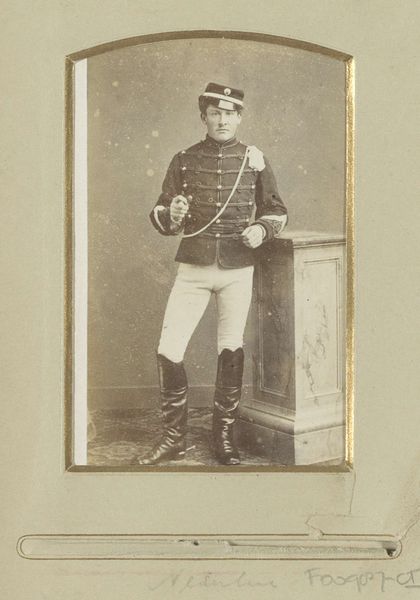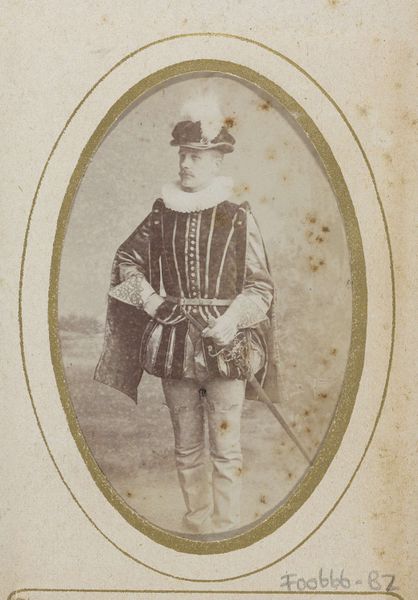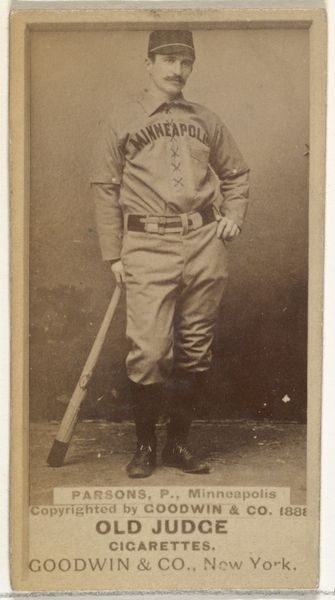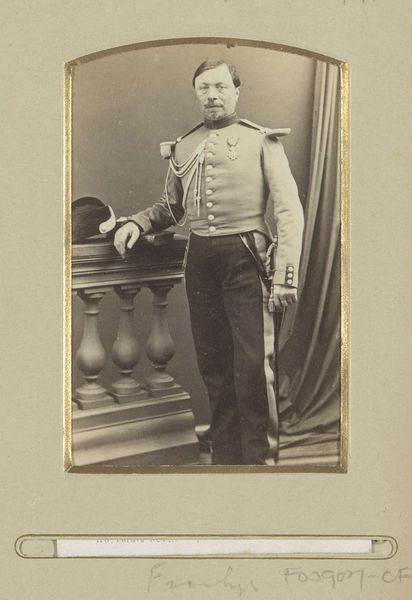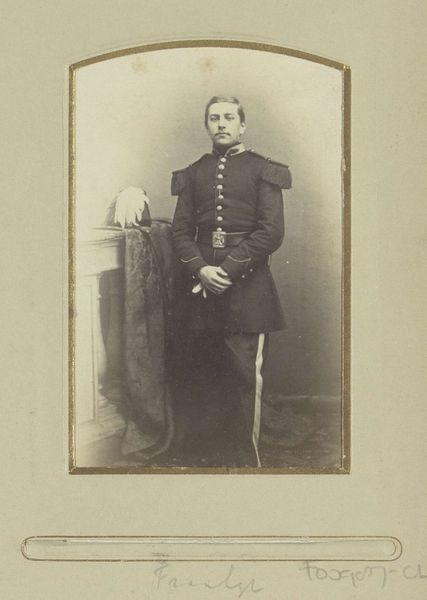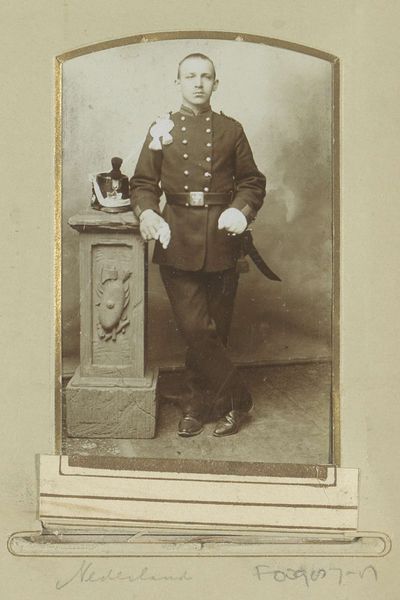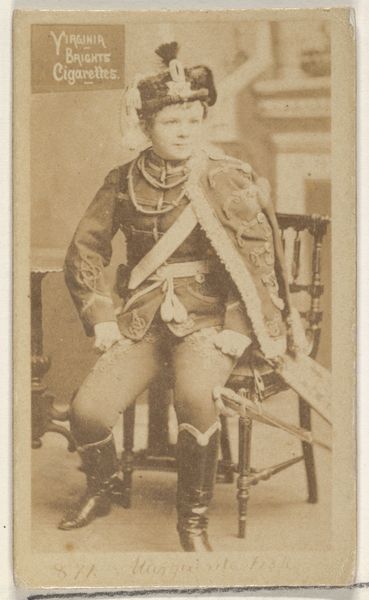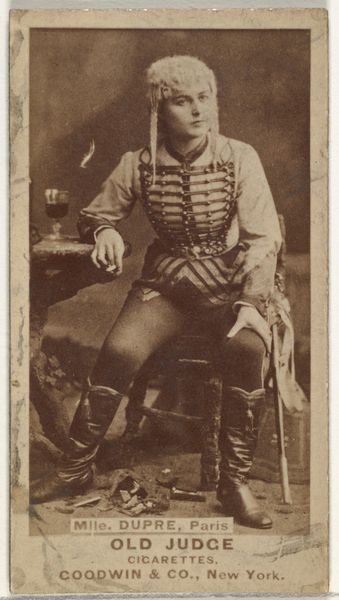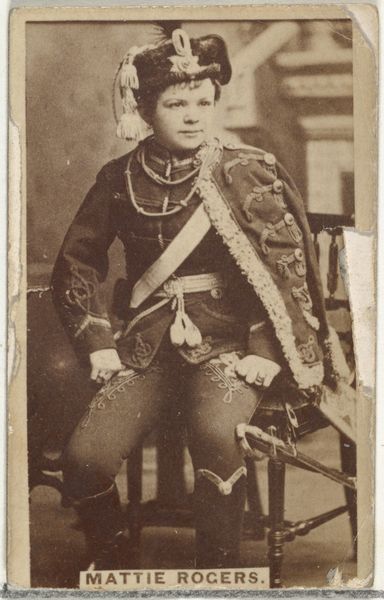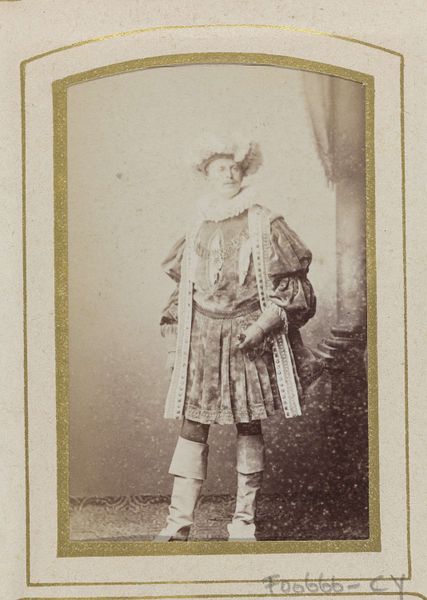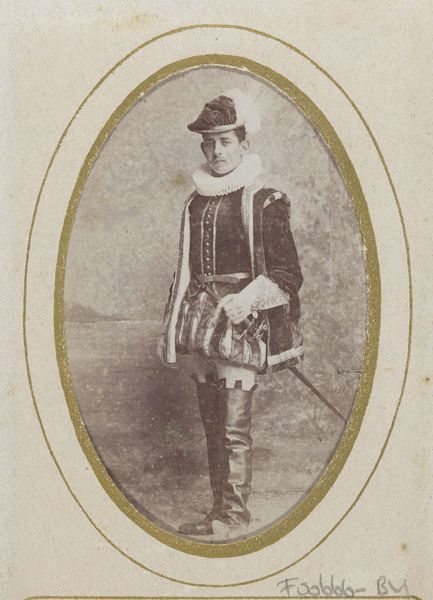
Card Number 158, Miss Marie Jansen, from the Actors and Actresses series (N145-2) issued by Duke Sons & Co. to promote Cross Cut Cigarettes 1880s
0:00
0:00
print, photography
#
portrait
# print
#
photography
#
19th century
#
genre-painting
Dimensions: Sheet: 2 5/8 × 1 7/16 in. (6.6 × 3.7 cm)
Copyright: Public Domain
Curator: Let’s turn our attention to this commercial card dating back to the 1880s, “Card Number 158, Miss Marie Jansen” printed to promote Cross Cut Cigarettes by W. Duke, Sons & Co. Editor: It has such a nostalgic sepia tone. It immediately creates a connection to a specific moment in the past. Curator: Indeed. Notice the tight framing, the subject, Miss Jansen, positioned centrally, reinforcing a hierarchy of image-making, designed, presumably, to catch the eye in a commercial context. Semiotically, it is about codes, presentation and audience. Editor: The material aspect is key here. These cards, flimsy yet ubiquitous, functioned as both promotional material and collectibles. The production process, probably involving mass printing techniques, allowed Duke & Sons to infiltrate various levels of society with imagery of refinement and performance. Curator: Observe the intricate detail in Miss Jansen's military-inspired attire. The symmetry, the carefully rendered fabric textures; there is clear effort invested in creating a visually compelling figure. Her outfit speaks to prevailing notions of power and gender roles in spectacle. Editor: Precisely! Consider the socio-economic implications of such commercial art. Cheaply produced using unskilled or low-skilled labor, they paradoxically aimed to sell luxury items appealing to aspirations of the rising middle classes. The circulation of these images reinforced certain values and lifestyles tied to tobacco consumption. Curator: Note too, the strategic placement of text: "Cross Cut Cigarettes are the best." This reinforces a reading of the entire card as advertisement rather than artistic merit. Yet this interplay of text and image makes the composition work, regardless of the overt consumerist intent. Editor: Looking at the material conditions behind this, we are able to understand that even something so trivial as a cigarette card participated in broader systems of capital, consumerism, and class aspiration. Curator: What strikes me is the clever manipulation of signifiers and artistic skill. It's quite captivating, irrespective of what one feels about consumer culture! Editor: Ultimately, by examining these humble cards through their materiality, their making and purpose, we access the complex cultural and labor dynamics of the late 19th century.
Comments
No comments
Be the first to comment and join the conversation on the ultimate creative platform.

